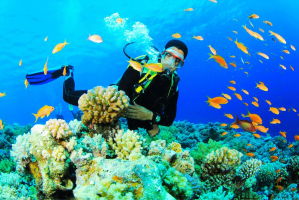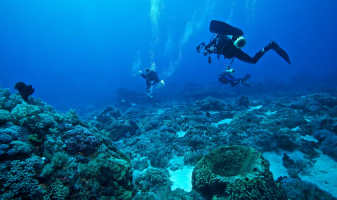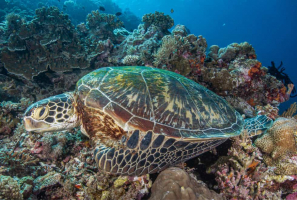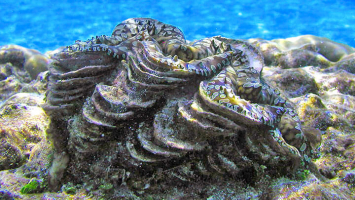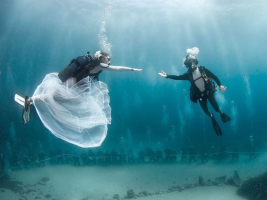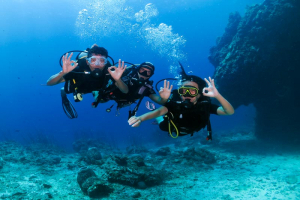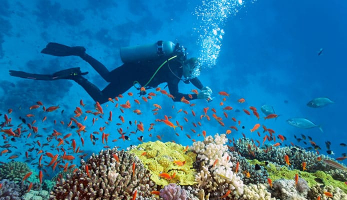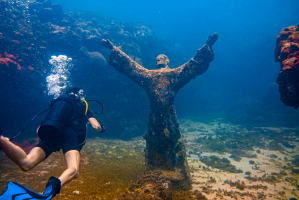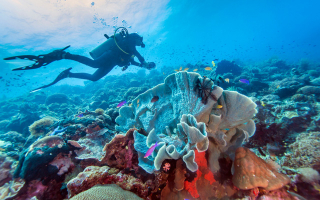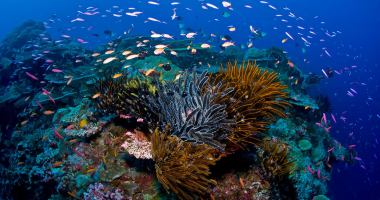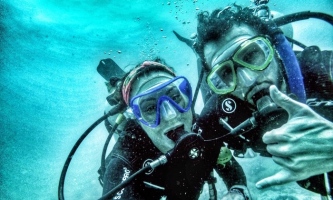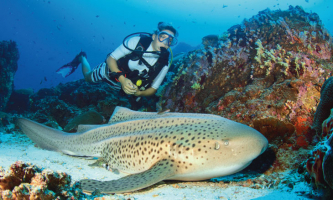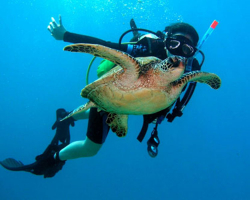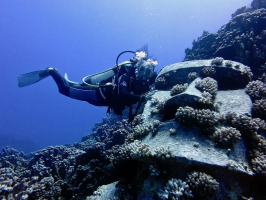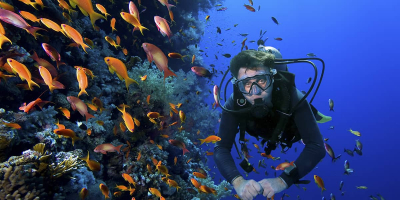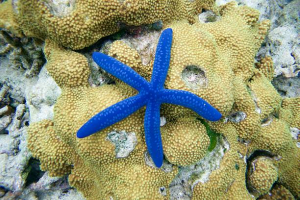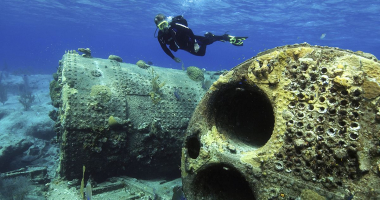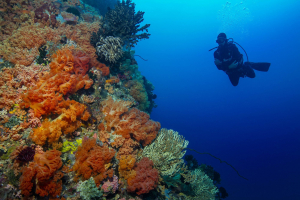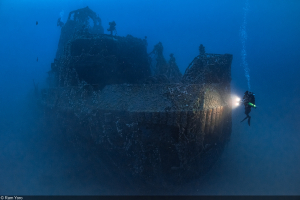Top 10 Best Dive Sites in Croatia
Croatia is arguably best known and adored for its beautiful coastline, in addition to its rich history and heart-warmingly attractive towns. Croatia has over ... read more...1,000 islands, and the Adriatic Ocean's opalescent draw will likely keep you near the water for the most of your vacation. The water is crystal clean, making for excellent scuba diving opportunities, and an increasing number of individuals are visiting the area solely for the purpose of scuba diving. There are a range of intriguing items waiting to be discovered in the depths, from caverns and submerged cliff faces to shipwrecks and even buried planes. Take a look at 5 of the Best Dive Sites in Croatia while on vacation here if you're planning a trip to this beautiful country.
-
This jewel of a diving location, which translates to Blue Grotto, is located just off Vis Island, which is best reached from Split. This mystical-looking sea cave, flooded with seawater, reminds me of something out of a movie, but one thing is certain: it's a popular diving spot and among the Best Dive Sites in Croatia.
Due to its remote location, this one can only be reached by boat from Vis Island's harbor, but once there, you'll be able to enjoy visibility of 80-90 feet (20-30 meters) and a diverse array of marine life, including lobster, octopus, corals, and scorpion fish, to name a few. Without a question, one of the most well-known diving destinations on the Adriatic, don't leave it out of your plan.
Location: Vis Island
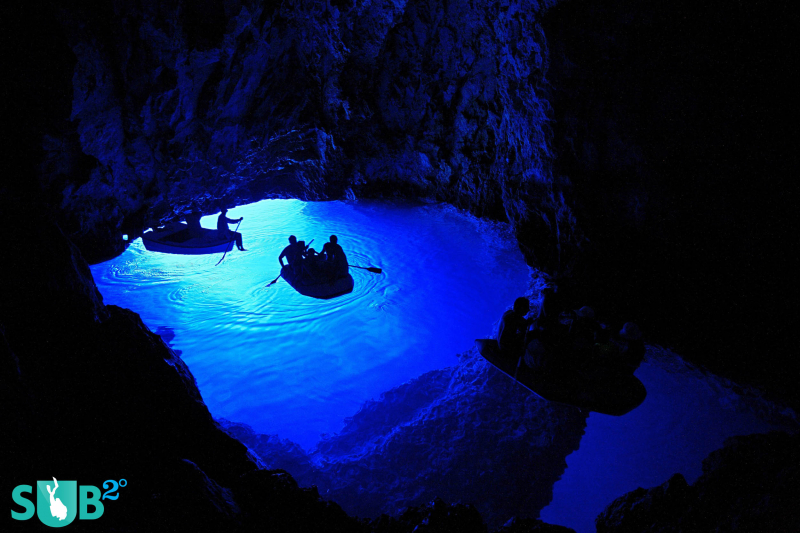
http://diveadvisor.com 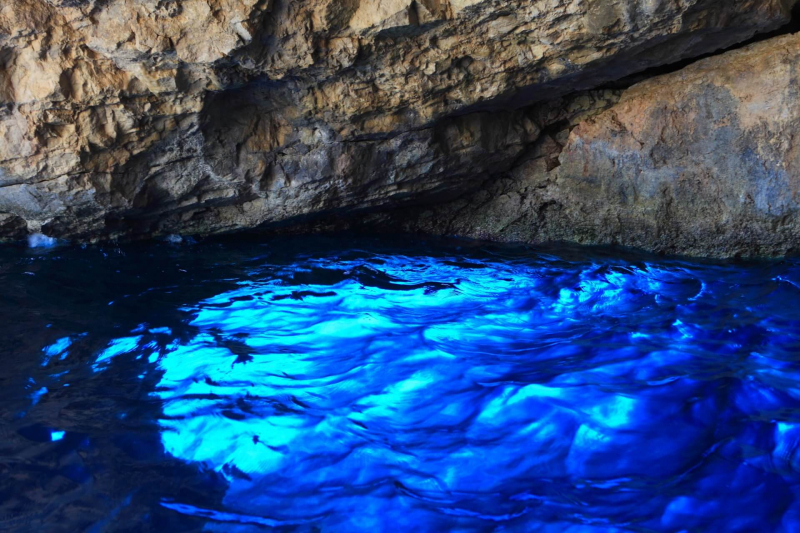
https://www.yacht4day.com -
The Pakleni Islands are a series of islands located directly across from the entrance to Hvar harbor. Vodnjak Reef, on the other hand, is a dive site that is particularly interesting. The reef is adorned with a colorful kaleidoscope of algae and corals, with equally colorful fish darting in and out, making it a wonderful site to go diving in Croatia.
Pakleni Otoci is practically a 10km/6.2mi long chain of limestone islets off the southwest coast of the island of Hvar. There are 16 islands in all, with Sveti Klement being the largest. Divers of various levels of experience flock to the islands, which provide a variety of intriguing diving opportunities. Vodnjak (canyon with depths ranging from 15m/49ft to 40m/131ft), Vela Garska (70m/230ft long wall with a maximum depth of 30m/98ft), Poseidon Pillar (beautiful chimney dive), Acnhor Wall (interesting drop off), and the wreck "Paulina," a wooden boat that sank about 150 years ago, are some of the most popular dive sites near Pakleni
Location: Hvar
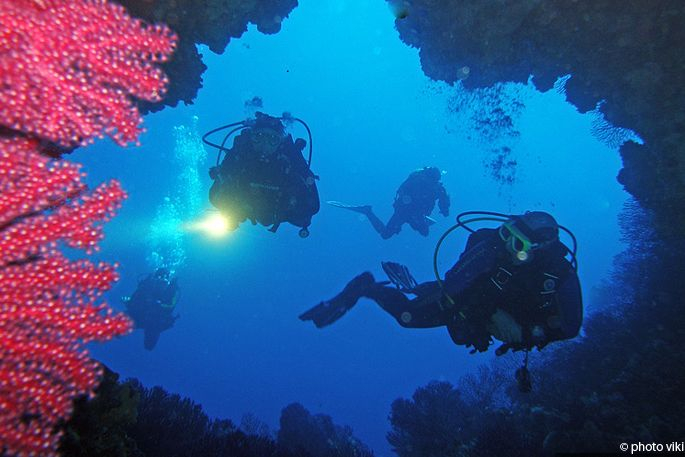
https://www.visit-hvar.com 
https://www.visit-hvar.com -
The wreck of the Taranto, one of the Best Dive Sites in Croatia, is located just off the coast of Dubrovnik, in the port of Gruz, and can easiest accessed by renting a car from Dubrovnik Airport. The ship's 45-degree slant allows for a good depth drop; the hull is naturally at 170 feet, buried in sand since 1943, while the ship's nose is at 70 feet.
The ship's cargo, including two tractors, may still be visible on the seabed, adding to the wreck's appeal by providing an even larger underwater playground for marine life such as schools of scorpion fish, mullet fish, cardinal fish, and other species. With so much variety and a tragic story to go along with it, it's undoubtedly one of Croatia's top scuba diving destinations.
From April to November, when the air temperature is around 27C/80F and the water temperature is 22-25C/71-77F, Taranto is ideal for diving. A well-preserved colossal wreck of the steamer Taranto, as well as the ship's cargo - two tractors from Italy - lie on a sandy bottom 20 meters from the sunken ship.
Location: Dubrovnik
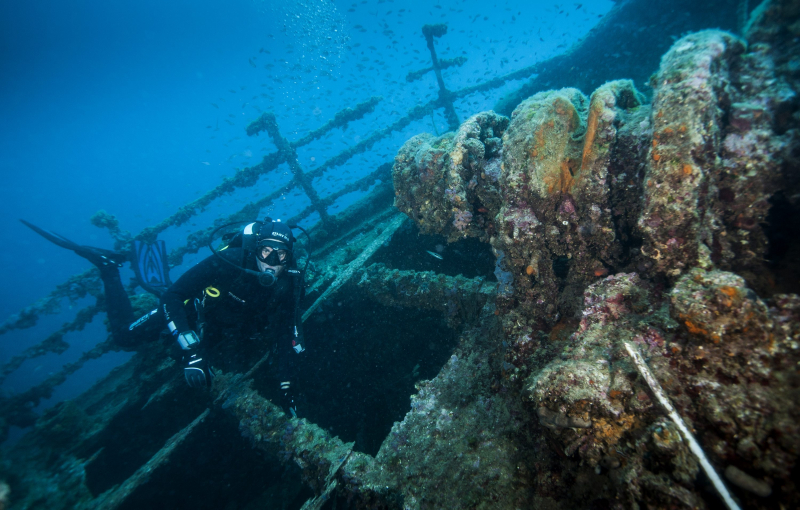
https://www.croatia-times.com 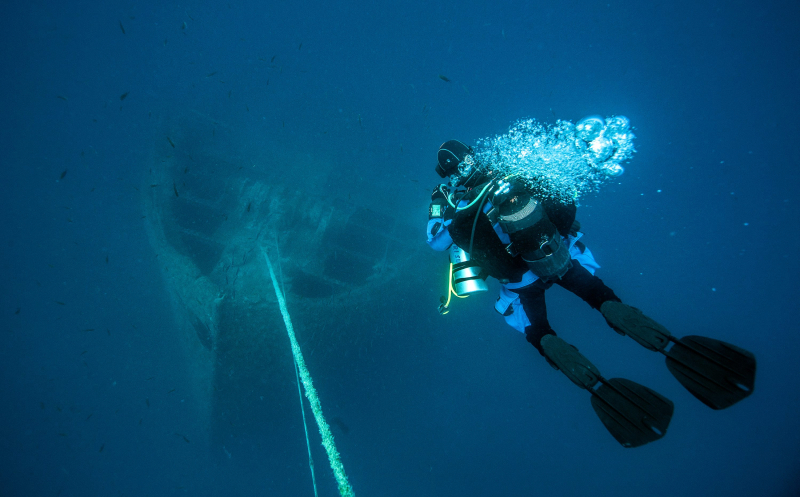
http://www.croatia-times.com/ -
Pag is a small island immediately north of Zadar that is connected to the mainland by a causeway. However, it is more interested in diving, and the most popular place is Premuda, which is the name of an underwater 'cathedral.' Of course, it's not a cathedral, but rather a network of interconnected caves with an incredible underwater light show. There are spider crabs, octopus, amberjack, and corals to be found, and there is also a tunnel leading to the main cave to explore for the more brave divers.
This dive will appeal to divers of all levels, with a tunnel (16m-50m/52-164ft) and the remains of the WWI Austro-Hungarian battleship SMS Szent István (40–60m/131–199ft depth) of particular interest to advanced divers. Divers can see octopi, crabs, and rainbow wrasses on the plateau, and mullets, white two-banded, sheepshead breams, and other species live on the sandy seabed. Corals, sponges, and polychaetes abound in all of the caverns.
Location: Pag
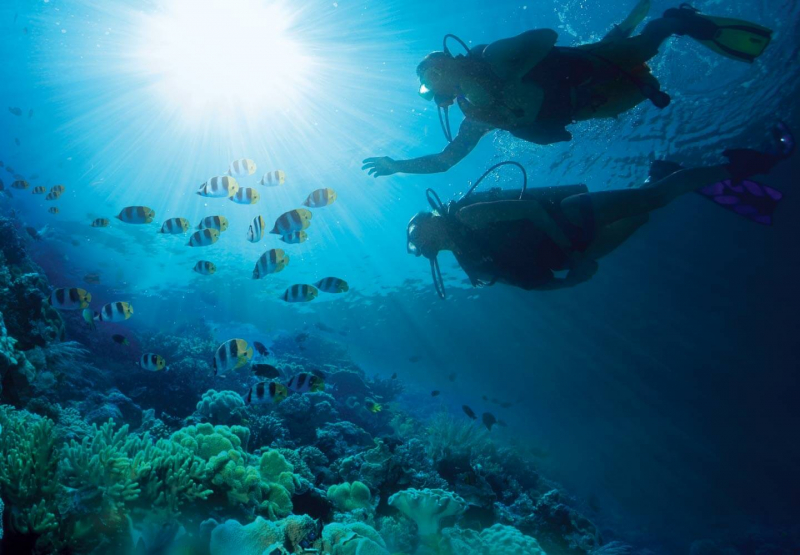
https://www.thehealthyholidaycompany.co.uk/ 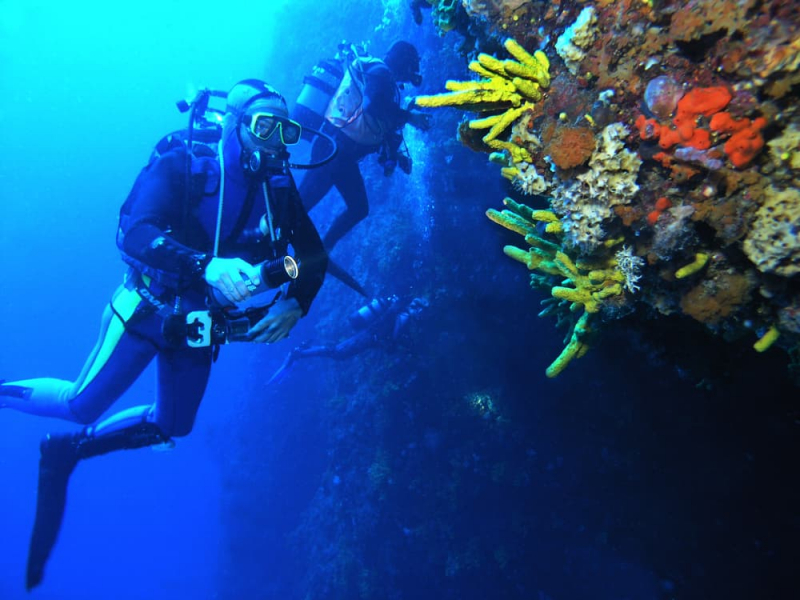
https://www.deepbluediving.org/ -
The Baron Gautsch, off the shore of the island of Rovinj, is often referred to as one of the most spectacular wrecks in the Adriatic. It's among the Best Dive Sites in Croatia left to more experienced divers, but if you meet the criteria, it's a diving spot not to be missed. Since its demise in 1914, it has been covered in multi-colored algae and corals, and because of its depth, numerous schools of fish have made it their home. This is unquestionably one of the top five scuba dive locations in Croatia for marine richness and adventure.
These sites are definitely worth checking out if you want to go scuba diving in Croatia during the summer, with visibility ranging from 60-90ft (20-30m) and warm water. Do you have any more recommendations for great Adriatic diving?
Location: Rovinj
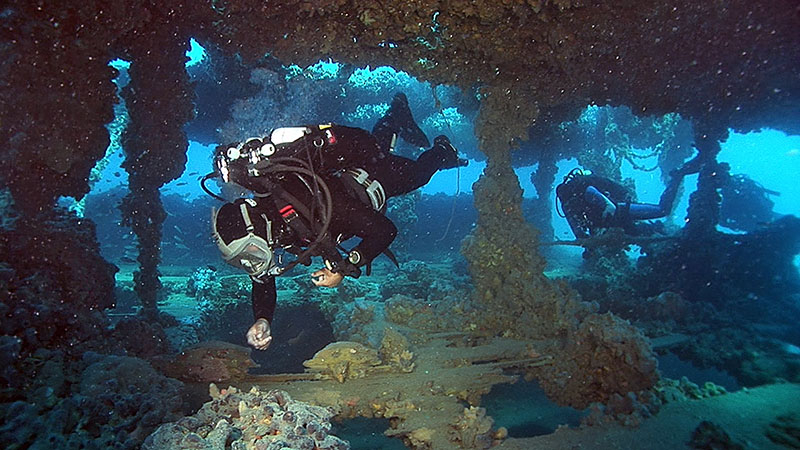
https://www.xtremespots.com 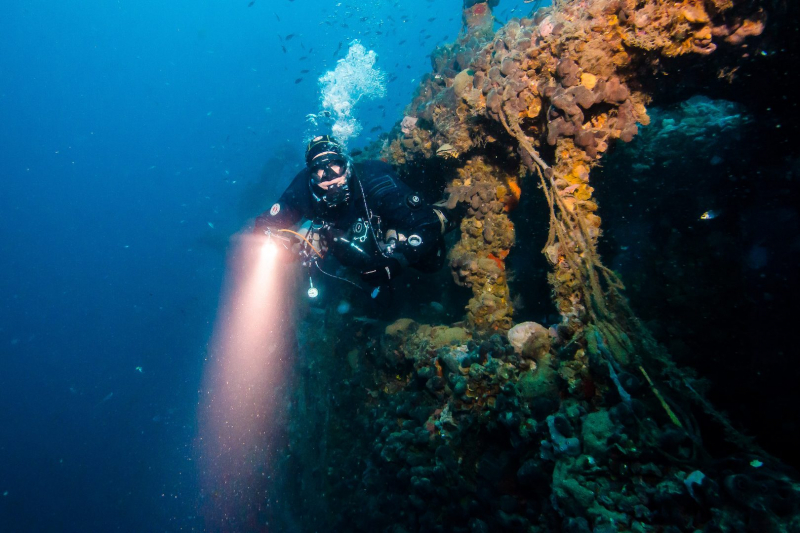
https://starfish.hr/portfolio -
This one-of-a-kind underwater museum is located in Croatia, near the historic city of Trogir, in the lovely Jelinak bay. The museum's setting includes nearly 50 life-size statues of all 14 Stations of the Cross, as well as a massive 8-meter-tall figure of Jesus Christ in the form of the 15th station.
The underwater story takes place at a shallow depth of 4 to 5 meters, with the enormous statue of Jesus Christ at a depth of 12 meters. Here's a glance at a little portion of the undersea story.Lorkum Island is only 10 minutes from Dubrovnik, and the sunken shipwreck dive site of the SS Tomislav is nearly complete. Divers can expect to spot dogfish and tuna hunting in the region, with the latter putting on magnificent displays as their scales gleam in the sunlight.
Location: Mali Lošinj
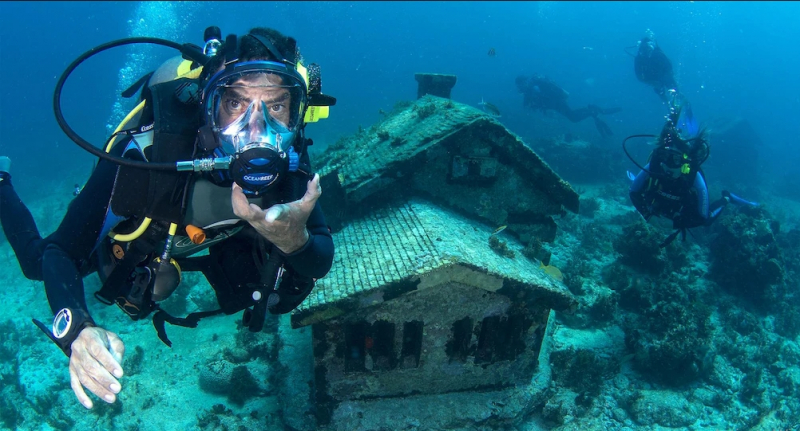
https://www.expedia.com/ 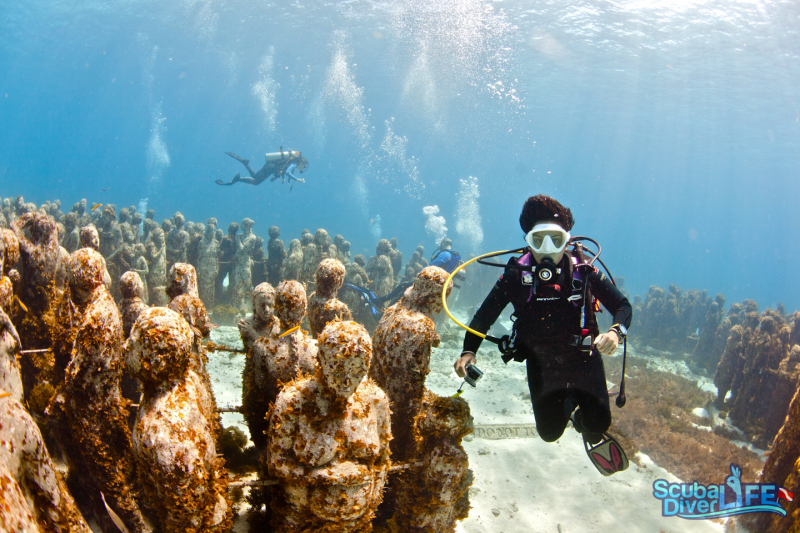
https://scubadiverlife.com/ -
Why should you go scuba diving in Bol? Bol, with various diving spots along the coastlines of the Brac and Hvar islands, is undoubtedly one of the most intriguing scuba diving locations in this region of Europe. The temperature of the Adriatic Sea has been attracting numerous recreational divers in its depth since mid-April, allowing them to discover the Croatian underwater environment. The diving season in this section of the Adriatic Sea lasts until the beginning of November, which is worth noting.
Bol is known for its friendly dolphins, which means divers can expect to get up close and personal with these lively creatures. The Dalmatian Island of Bra will appeal both nature enthusiasts and history aficionados equally, in addition to fantastic diving. The coast is littered with ancient ruins like Roman quarries and monasteries, and the typically Mediterranean experience of gourmet restaurants and fine sand beaches is seldom more than a short walk away.
Location: Brač Island
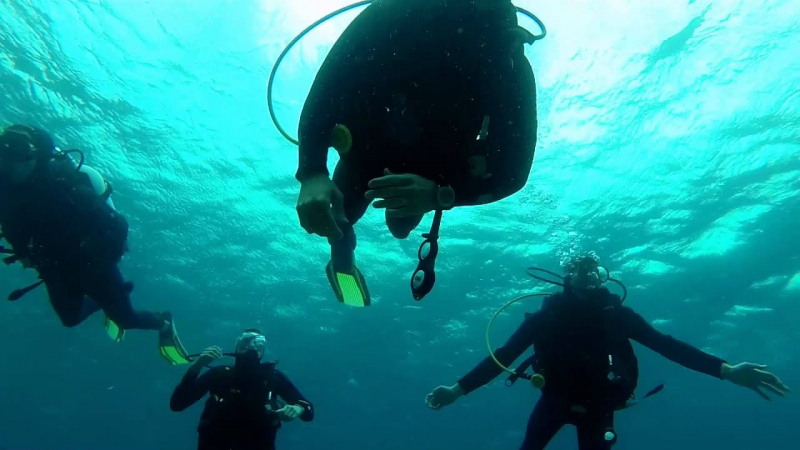
https://www.youtube.com 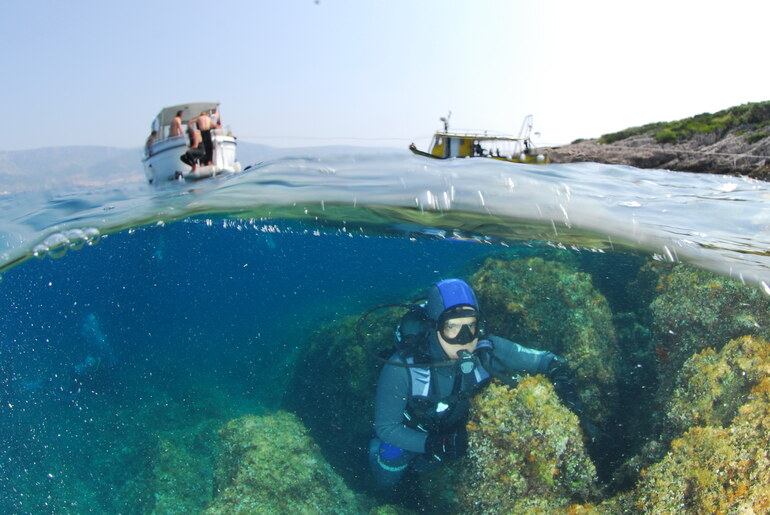
https://www.santo-bol-croatia.com -
If you haven't already been to this UNESCO World Heritage Site, your next charter vacation provides the ideal opportunity to combine a dive among the wrecks with a stroll through the walled city's old alleyways.
The wreck of the cargo ship Taranto, which sank after hitting a mine while transporting flour and tractors in 1943, will be an intriguing destination for advanced divers, who will find octopuses, lobsters, and cardinal fish inside. The wreck is 10 meters deep in the shallows and 52 meters deep at its deepest point.From April to November, when the air temperature is around 27C/80F and the water temperature is around 22-25C/71-77F, Taranto is ideal for diving. A well-preserved colossal wreck of the steamer Taranto, as well as the ship's cargo - two tractors from Italy - lie on a sandy bottom 20 meters from the sunken ship.
Location: Dubrovnik
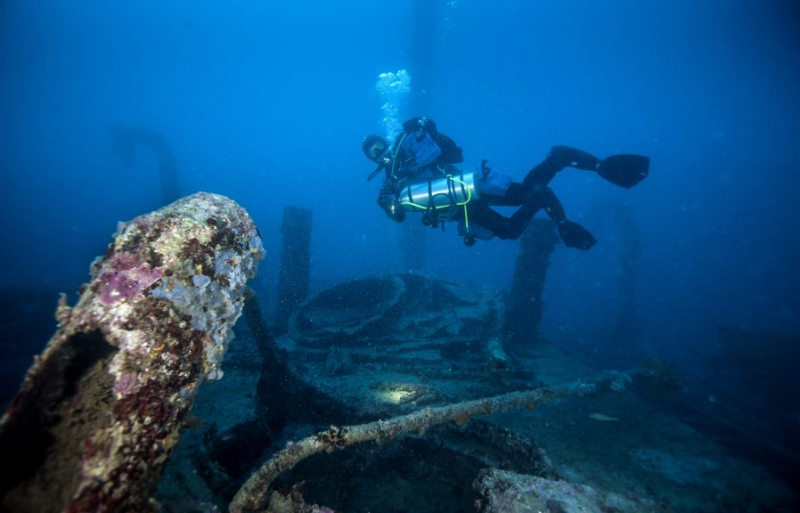
https://www.croatia-times.com 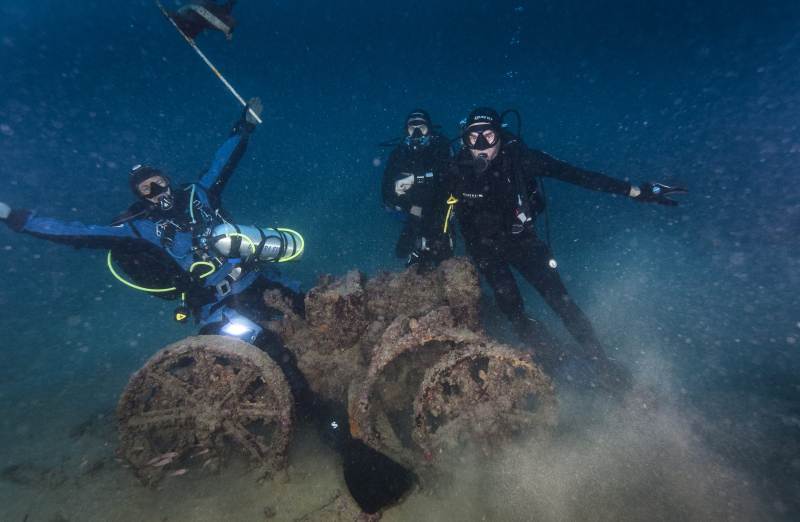
https://www.croatia-times.com -
Fraskeric features four lovely tunnels that start at three meters deep and descend to 16 meters, making it a wonderful place for divers of all skills. The dreamy atmosphere beneath the waves is enhanced by rays of light breaking through holes in the tunnels. The site is especially popular for snorkeling and night diving, and the tunnels have a silvery shine when the moon is full. Seahorses can also be seen at Istria's dive spots.
This location also has an underwater wall that starts at 14m/45ft and ends at 35m/114ft. This site is ideal for divers of all levels. The usual summer air temperature is around 30 degrees Celsius (86 degrees Fahrenheit), while the sea temperature is around 25 degrees Celsius (77 degrees Fahrenheit). A mast from a sailing ship has been jammed into a crack in the wall at the far end of the wall. This mast is thought to have broken off during a storm, sunk, and been lodged in the rock wall.
Location: South of Pula
https://www.youtube.com/ -
Korula has a diverse range of sea life only a few meters below the surface, allowing for an easy and satisfying dive for children and beginner divers. Crayfish travel the ocean floor, passing by sedentary starfish and colourful sea slugs, while octopuses and moray eels lurk in the darkened nooks of coral reefs.
Drop into a little hole above the water level in Suac and walk through the tunnel to the Te Vega sea lake. The sight of parrotfish and goby swimming along the bottom and huge sea walls reaching more than 30 meters above sea level is breathtaking.
Location: Sušac Island, near Korčula
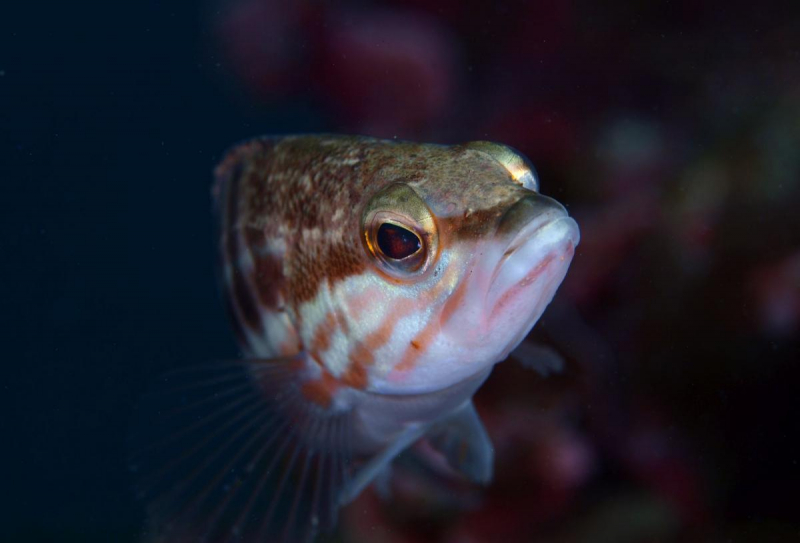
https://divebooker.com/



